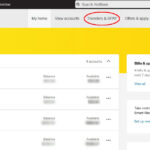When it comes to monitoring vehicle mileage, a smartphone can do a better job than manually logging it with a pen.
When is it necessary to keep a logbook?
In Australia, you have two approaches to choose from when claiming a tax deduction for your automotive expenses, which can either be a) cents per kilometre method or b) logbook method.
You can claim a maximum of 5,000 business kilometres per car using the cents per kilometre method without providing written proof. On the other hand, you’ll need to keep a logbook for tax deduction claims for mileages over 5,000 kilometres.
Using the logbook method:
- you’ll need a logbook and odometer readings for at least 12 continuous weeks;
- you’ll claim fuel and oil costs from receipts or estimates based on odometer records showing readings from the beginning and end of the period you had the car during the year; and
- you’ll need written proof for all other car expenses such as running costs and depreciation but excluding capital expenditures like the car’s purchase price, the principal on any money borrowed to acquire it, and any improvement costs.
As long as the logbook represents everyday use, it is valid for the next five years.
What goes into logging those kilometres?
Previously, you would have to keep a physical logbook, which you could get from a stationery store and meticulously note travel details over a continuous period of 12 weeks, which would be used to figure out your deduction for the financial year.
The Australian Tax Office (ATO) website has a detailed list of the information you must record in your logbook. These include: the odometer readings, the total mileage, the business-use percentage, and the number of kilometres travelled throughout the logbook period.
That’s a lot of peeking at the odometer and precise handwriting — aren’t you exhausted just thinking about it? We are aware of your concerns. Many software engineers agree, and they’ve worked hard to make the task easier.
Digital vs. paper
Going digital will always be the best option.
There may be some perks in using paper, and some may argue that pen and paper are more trustworthy and solid and less intimidating to use for technophobes. However, the case for digital is more compelling. Using a digital logbook;
- your trips can be recorded using GPS with digital logbooks (or you can also enter them manually, your choice);
- you can save more time due to a more efficient process (less peeking at the odometer);
- you can be better protected from user errors (for example, if you forget to log a trip, you can add your start and endpoints at a later time, and your mileage will still be accurate);
- you can backup your data in case your device is lost or damaged; and
- If they’re ATO compliant, you can easily export your logs at tax time – that simple.
What digital options are there?
There are a plethora of options available. Here’s a quick rundown of three common alternatives:
- ATO App
- Driversnote
- Little LogBook
1. ATO App
This free app supports iOS, Android, and Windows. With the ATO app, you may use myDeductions to track a variety of deductions, as well as document car trips using GPS, point-to-point computations, or odometer readings. You can trust it to be up to date with all of the newest tax legislation because it belongs to the ATO, and you can post your deductions immediately to your tax return.
2. Driversnote app
This app supports iOS and Android. It is free for the Lite version, and you have to pay for premium versions such as the Basic and Enterprise versions. Driversnote is a well-liked and well-reviewed app. It works in most countries and includes default official mileage tracking values for Australia and the United States, the United Kingdom, Canada, Sweden, and Denmark. It uses your phone’s GPS to track miles, or you may manually enter trips. It’s also ATO-compliant; during the tax period, export your data to a spreadsheet or PDF.
3. Little Logbook
This GPS logging device does not require a smartphone because it is not an app. This little digital device which costs $99.95, is plugged straight into your car through a USB adapter. The software was created in South Africa and has dedicated editions for Australia, the United States, and New Zealand aside from South Africa. If you overlook tracking your trip, you can manually enter the information afterwards. To backup your data and generate reports, plug the USB into your computer.







